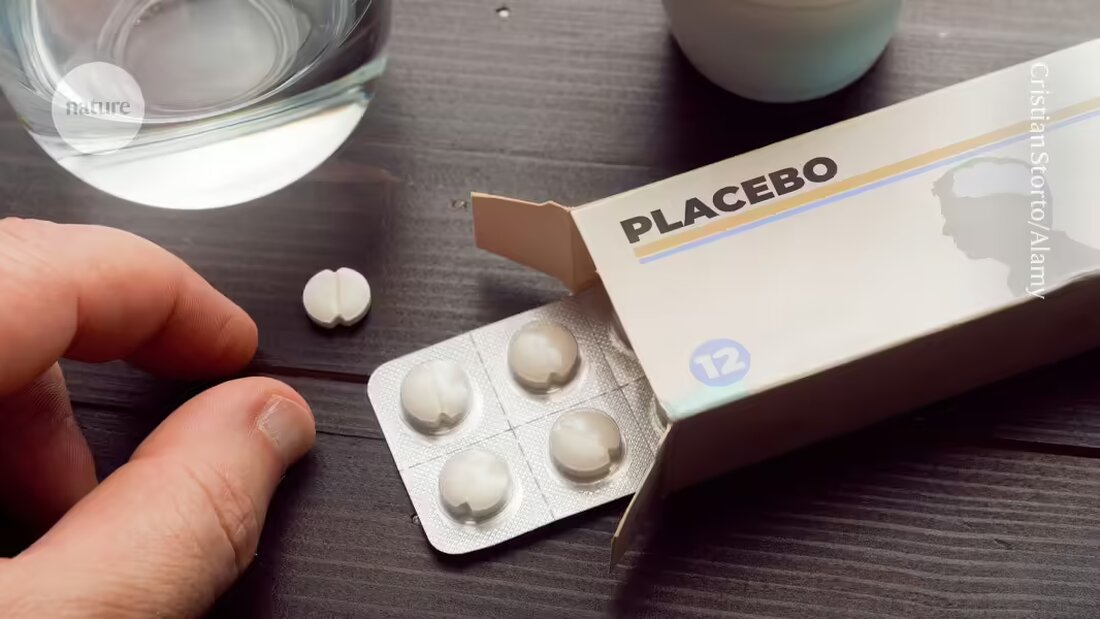When people take a sugar pill that they believe is a painkiller, it can reduce their experience of pain.
Researchers have long known about this phenomenon, called the placebo effect. But the biological mechanisms behind it have remained a mystery. Now neuroscientists have identified brain circuits in mice that could explain how placebos can relieve pain.
In one today inNaturepublished study 1, scientists tracked the activated brain regions in mice that were conditioned to expect pain relief, analogous to the experience humans have when given a pill without active ingredients. They were surprised to see activity in the cerebellum and brainstem - areas of the brain normally associated with movement and coordination, not pain.
“We had no real insight into how [the placebo effect] happens and whether it was a real phenomenon,” says Clifford Woolf, a neuroscientist at Harvard University in Boston, Massachusetts. “I think this helped us identify that it was actually a real phenomenon.”
The findings could ultimately lead to new ways to treat pain, says study co-author Grégory Scherrer, a neurobiologist at the University of North Carolina at Chapel Hill. “We could have a completely new type of drug.”
Pain relieving way
Imaging studies in humans have shown that pain relief from placebos is associated with activity in the brainstem and a brain area called the anterior cingulate cortex.
To investigate this further, Scherrer and his team developed an experiment to create a placebo-like expectation of pain relief in mice. Using two chambers, one with a comfortably warm floor and one with a painfully hot floor, they conditioned the animals to expect the pain to be relieved upon entering the cooler chamber on the hot floor.
Using live imaging tools, the team identified a group of neurons that were active during the placebo experiment. These were located in the pontine nucleus (Pn), an area in the brainstem that connects the cerebral cortex to the cerebellum and has not previously been associated with pain.
To further understand the role of these neurons in pain relief, the authors measured the effects of blocking their activity. When their PN neurons were inhibited, mice that walked on the hot floor were quicker to perform pain-relieving behaviors such as licking their paws, standing, and jumping. Mice with activated Pn neurons took longer to lick their paws "because it's not as painful," says Scherrer.
Subsequent analyzes of 4,932 neuronal cells in the PN found that 65% had opioid receptors - the same ones activated by strong painkillers. The neurons with opioid receptors extended to three areas in the cerebellum that were not previously thought to play a role in anticipating pain relief. The researchers identified a group of Purkinje cells – the main cells in the cerebellum – that became increasingly active during the placebo experiment.
“There are almost certainly endogenous opioids that take part in this,” says Woolf.
New goals
The research could open up new ways to understand how existing painkillers work and to discover new, more effective ones.
Scientists could explore how to activate the neural circuitry in the brainstem and cerebellum without the use of placebo pills. Future studies could "find a way to make activating the body's own control mechanisms that can suppress the experience of pain more reliable," says Woolf.
Understanding these brain circuits may also explain why some pain therapies, such as cognitive behavioral therapies and transcranial magnetic stimulation, actually work.
“The brain is a complicated haystack, and we're often looking for a needle,” says Tom Wager, a neuroscientist who studies the placebo effect at Dartmouth College in Hanover, New Hampshire. This study “provides a new target that we can seek in human studies.”
Questions remain about what exactly activates the placebo effect in those who experience it. "What we still don't know is why it occurs in some individuals and not others, and why it disappears over time," says Woolf.

 Suche
Suche
 Mein Konto
Mein Konto

